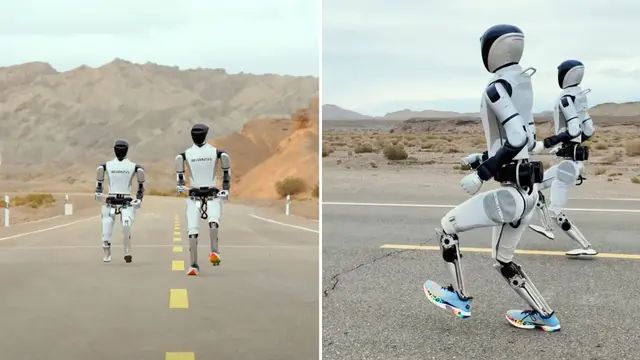The Race of Robots: Can They Keep Up with Humans?
When it comes to the art of walking, we humans make it look easy. But did you know that mastering the delicate balance of bipedal movement required millions of years of evolution? This adaptability is what makes replicating human-like walking and running in robotics such a challenging feat. Recently, however, there’s been some exciting news from the world of robotics that’s sparking our interest.
In a recent event in the vast expanse of the Gobi desert, a Chinese humanoid robot has upped the ante by achieving a maximum running speed of 3.6 m/s, which is about 12.96 km/h. That’s impressive by any standard, but it’s not quite on par with the swift footfalls of humans, especially during a marathon, where we can clock speeds of around 20 km/h or more during a sprint.
The Race and the Robots
This milestone came during a match between two humanoid competitors from Robot Era, aptly named STAR1. The robots showcased their agility over a 34-minute run. What’s fascinating is that one of the robots donned a pair of running shoes, which seemed to play a crucial role in achieving higher speeds. It’s a reminder of why we humans have relied on footwear since our hunter-gatherer ancestors roamed the earth—better grip and traction can make all the difference!
The Future of Running Robots
Despite these advancements in robotic speed, the conclusion is clear: the day when humans may be outpaced by humanoid robots is still some time away. We thrive on instincts honed over millennia, and while these robots are making strides—literally—the nuances of human movement and speed remain unmatched.
Why It Matters
Advancements like these in robotics not only challenge our perceptions of technology but also ignite discussions on their evolutionary potential. We might find ourselves using robots for various applications, from service industries to aiding in search and rescue operations.
Imagine a future where humanoid robots could assist people in daily tasks or even in extreme environments where human presence is risky. The implications are vast, from improving efficiencies in industries to enhancing safety in disaster scenarios.
A Look Ahead
As we continue to nurture the field of robotics and artificial intelligence, there’s one thing that’s clear: we’re just scratching the surface of what these machines can accomplish. The strides made by robots like the STAR1 highlight not just the potential for speed and agility, but also the creativity and innovation driving these technologies forward.
So, what’s next for these robotic athletes? Will we see humanoid robots completing marathons? Or maybe participating in the Olympics someday? The possibilities are endless, and the excitement surrounding advancements in this field continues to build.
The AI Buzz Hub team is excited to see where these breakthroughs take us. Want to stay in the loop on all things AI? Subscribe to our newsletter or share this article with your fellow enthusiasts!




